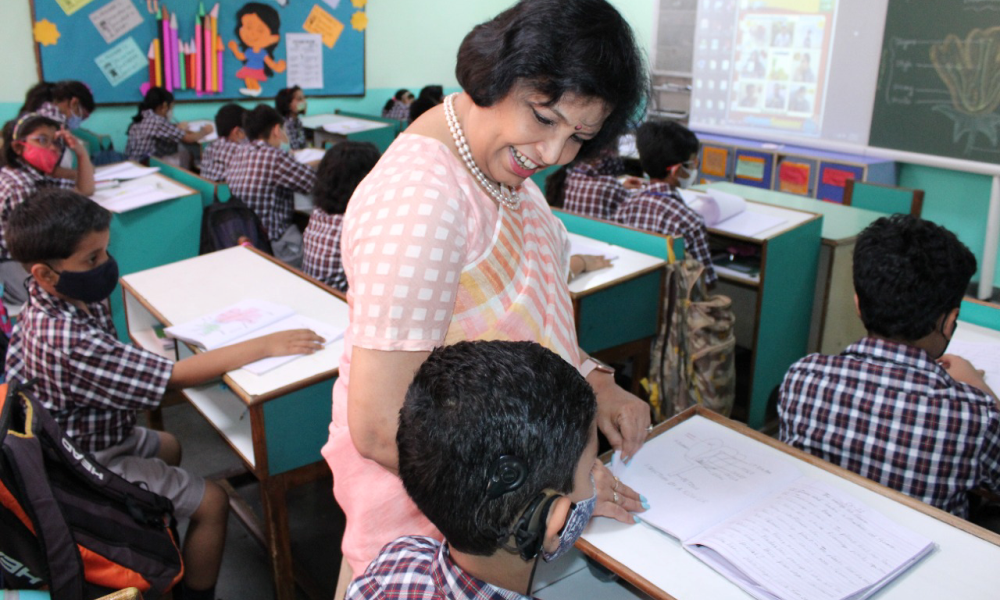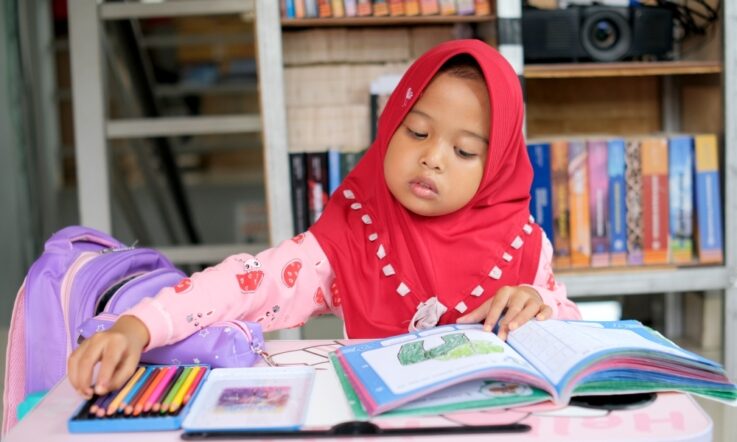Established in 1973, the National Progressive Schools' Conference (NPSC) is an association of 195 private senior secondary schools across the country. Teacher’s association with NPSC dates back to 2017, when an entire India print issue was published with articles from leaders of NPSC member schools.
In today’s article NPSC Chairperson Dr Sudha Acharya shares what she is doing to ensure her school serves the needs of all students, including those with disabilities.
ITL Public School in New Delhi is a K-12 inclusive private school with 3000 students and 140 teachers. The school places equal emphasis on curricular and extra-curricular activities with the aim to provide multidisciplinary learning.
ITL is one of the few fully inclusive schools in Delhi. It welcomes students from diverse social, cultural, and economic backgrounds including children with a range of disabilities and additional needs. The school believes that every child can learn and thrive if provided with a comforting, caring, and compassionate environment.
The recruitment policy and training structure of the school ensure teachers provide individual attention to students. Today, the school boasts of an average student score of 92 per cent in Board examinations.
Here, Dr Sudha Archarya, Principal, ITL Public School and NPSC Chairperson describes how she makes her school inclusive and open to all students. At the core lies its ‘zero-refusal policy’ for new admissions.
Building inclusive culture and climate
Some think that to make a school inclusive, you need a big budget − that’s not true. What is more important is the mindset to provide barrier-free education to all children.
I make the vision and mission of the school loud and clear to every staff member. Teaching and non-teaching staff should have a clear understanding of what the school aims to achieve. We have a whole child approach with a focus on child-centred teaching and learning.
Teachers to staff managing washrooms – everyone should be oriented. Every child has different needs – some may not speak, or some may need physical or verbal prompting – so it’s important for all staff to know how to support them.
Networking with the community
We have to involve the whole community to build a support system for a child who has special needs. It can be difficult for a parent to accept that a child has special needs – physical, social, or emotional. So, orientation programmes are organised for parents.
As a principal, networking with students’ families and paraprofessionals − speech therapists, occupational therapists, physiotherapists, or special educators – is one of my topmost priorities. All of us coordinate, consult, and communicate amongst ourselves to decide the best plan for the child. And when I say family, it’s not just parents but grandparents as well.
Last year, a child had lost her hair due to an illness. We oriented her peers and their parents about the child’s condition before she entered the classroom. This can prevent bullying or name-calling in the classroom that children often fear.
A buddy system for teachers
In our school, every teacher and student gets a buddy who mentors them in their teaching or learning journey.
A new teacher observes the class of the mentor (who need not be a senior teacher). This helps them to understand the school’s inclusive classroom transactions, processes, and learning environment. After a few days, the mentor observes the classroom of the new teacher.
It’s only after the teacher is comfortable and acclimatised, I go and observe their classroom and have a one-to-one discussion. If I would have done this at the beginning, they would feel intimidated.
Supporting new admissions
For any special needs student taking admission in our school, we organise a session with the school counsellor and special educator. We also orient all teachers and parents of the Grade about the child’s particular needs.
Sometimes, when a new child joins the school at three or four years of age, parents might be unaware of the special needs. So, our teachers observe a child for 15 or 20 days on their own and they discuss their observations with parents.
Whenever we observe a symptom, we inform parents about our informal assessment so that they can take the child for formal assessment.
Upskilling teachers for inclusion
Teachers in our school undergo training in various aspects of inclusion from time to time. Of late, teachers previously trained in international sign language have participated in workshops on Indian sign language.
The Rights of Persons with Disabilities Act, 2016 outlines 21 disabilities, and all teachers in our school know about these disabilities and their signs so that they can identify children who need support. The National Council of Educational Research and Training (NCERT) checklist helps teachers to flag concerns, for example Down Syndrome has 32 symptoms.
All teachers are well trained in creating short- and long-term goals through individualised education plans (IEPs) for children with disabilities. This is done in consultation with parents, who decide what educational outcomes they would like to see in their child. It is not just about academic support but also fulfilling students’ psychosocial and emotional needs. Special educators, teachers, and counsellors work as a team to review these from time to time.
We make sure teachers have continuous training throughout the year in using the tools that support inclusion.
Online teaching for children with special needs
During the COVID-19 lockdowns, we had to ensure that all children continue to learn. As the first step, parents having children with similar needs were clustered into groups for our home-based program. Teachers organised cluster classes from 4 pm to 7 pm for each group. Parents could also discuss the educational needs of their child as part of these groups.
Along with this, we also created 24-hour schedules that children could follow at home. This was particularly important for some students who show behavioural issues without a routine. Say, wake up, then make a sandwich, make a drink, water the plants, do some household chores – things that would help them to stick to a routine. We had to provide not only academic support but also social and psychosocial support to students.
Even after the pandemic has subsided, we have continued with cluster classes for children with disabilities.
Organising mental health initiatives
When a child joins our school, we create a learner’s profile – Know Your Child − like the Know Your Customer format used in banks. This helps us to understand what a child likes, say a child may not enjoy colouring but enjoys dancing or singing.
Under the Thank God It’s Friday initiative, we encourage parents, teachers, and students to share their own stories. Anyone can book a slot to share their story.
We have a peer education program where senior students talk to junior students about their lives and education.
We also have a Wellness Wednesday initiative where we teach children how they can take care of their social and emotional wellbeing. A wellness survey is conducted which has been developed in-house to understand students’ social and emotional health.
What teaching methods do you use to make learning inclusive for all learners? How do you support students with disabilities and additional needs? Are all staff aware of individual student needs? How do you collaborate with parents to set the learning goals of each child?
Do you have specific mental health programs in your school to support teachers and students?



